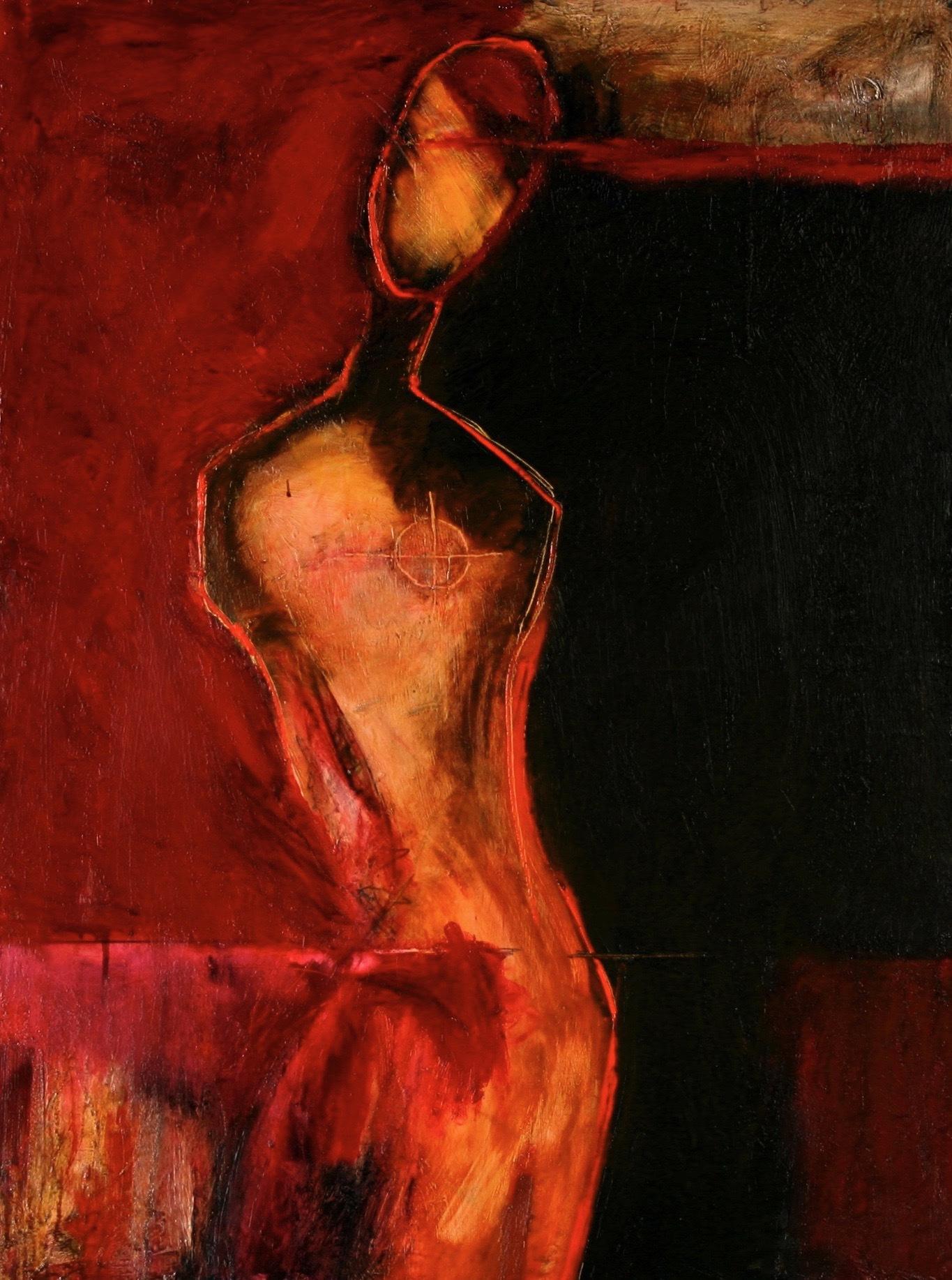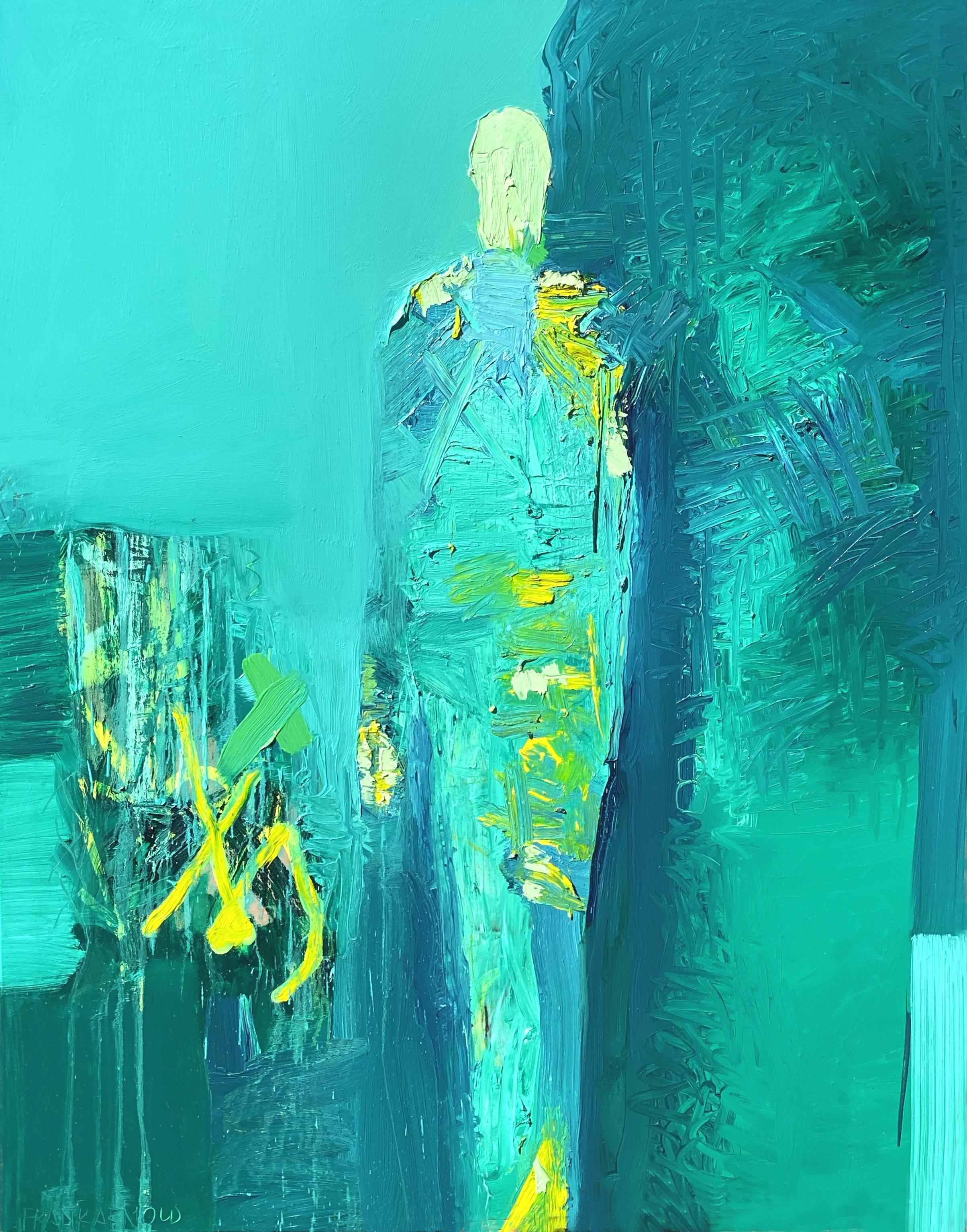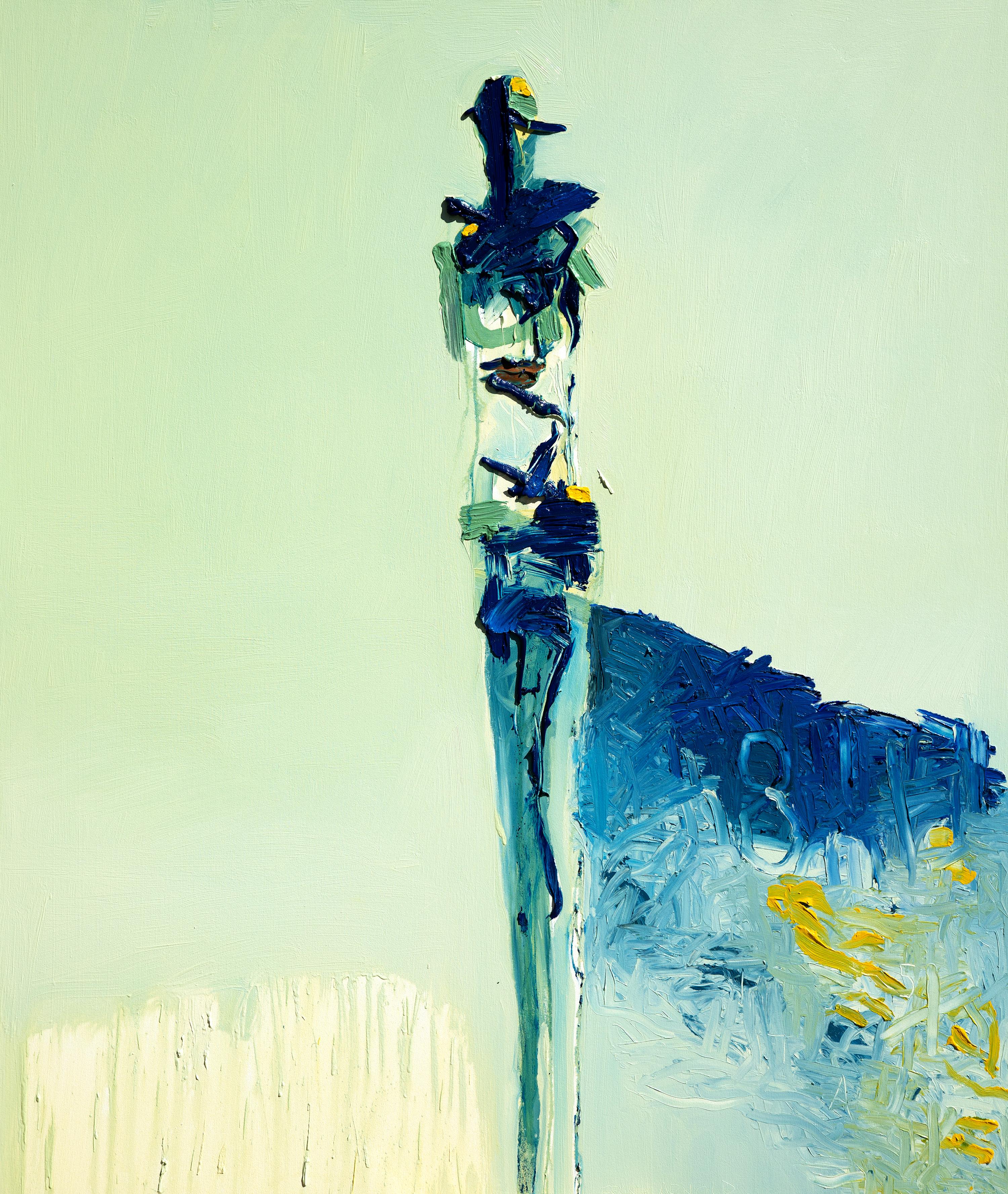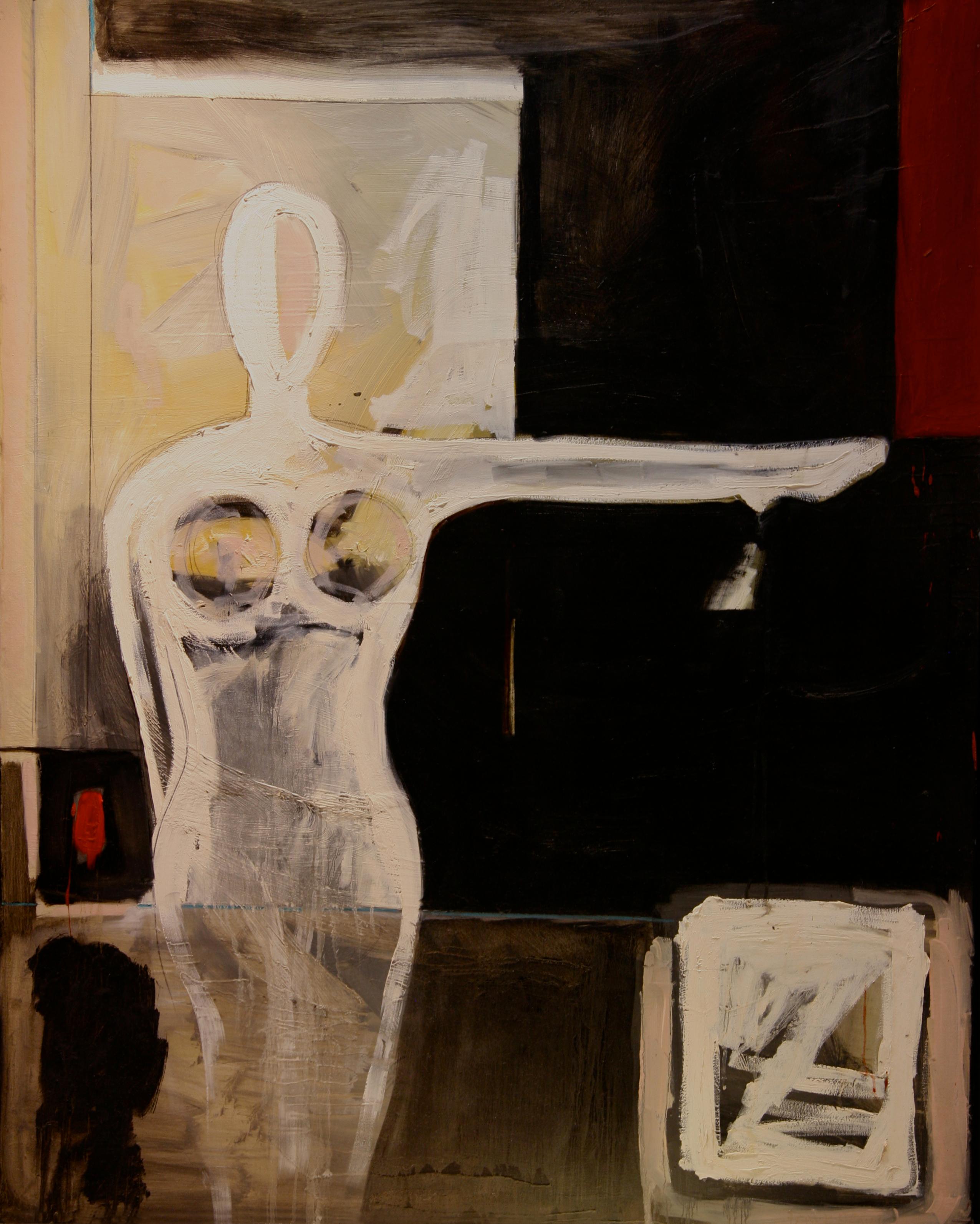Items Similar to Early Abstract 1926 - Scottish Abstract art modernist oil painting
Want more images or videos?
Request additional images or videos from the seller
William JohnstoneEarly Abstract 1926 - Scottish Abstract art modernist oil painting1926
1926
About the Item
Scottish artist William Johnstone OBE painted this stunning abstract oil painting. It is a superb important piece of Scottish Art History and early twentieth century abstraction. An early modernist work, dated 1926 so way ahead of its time and other abstract artists. At the forefront of the Scottish Renaissance and European modernism this painting pre dates the abstraction and Abstract Expressionism of the later mid twentieth century. Earlier than Arshille Gorkuy who was, in the thirties, a bridge between European Modernism and American Abstract Expressionism, Johnstone was inspired and influenced by ideas surrounding the surreal and the subconscious and this painting appears to have elements of this thought process within its key abstract passages.
Signed and dated 1926 verso.
Provenance. William Hardie Ltd, Glasgow label verso.
Condition. Oil on board, 30 inches by 24 inches and in good condition.
Frame. Housed in a black and gold frame, 37 inches by 31 inches and in good condition.
William Johnstone OBE (1897–1981) was a Scottish artist and writer, and was the Principal of Central School of Arts and Crafts from 1947–1960. Johnstone was born in 1897 in Denholm in the Scottish Borders and grew up to a farming family. After the First World War he gave up the life of a farmer to go to Edinburgh College of Art. Here he met the poet Hugh MacDiarmid who shared many of his political and artistic ideals. Together they formed the concept of the Scottish Renaissance to release the nation from its cultural poverty under a centralised British arts scene. Johnstone travelled to Paris in his youth, which opened him to the ideas of modernism. He also spent a large amount of time in the US, where he became interested in Indian cave paintings for their deemed naïve simplicity. During World War II Johnstone became culturally despondent, turning away from practising art to become a teacher, a role which occupied much of his professional life. In 1938 until 1945 he served as the Principal of the Camberwell School of Art and Crafts in London. And later, in 1947, was appointed as Principal of the Central School of Arts and Crafts. Johnstone was noted for his recruitment of a new teaching staff of fine artists which included the painters Mary Kessell (b. 1914) and Richard Hamilton, brought in to assist at the School of Silversmithing and Jewellery. Johnstone played an important and pioneering role in his teaching and promoting of 'Basic Design principles'—which he had developed from his contacts with the Bauhaus- at both the Camberwell and Central Schools. He became well renowned as a teacher, creating innovative courses and employing such important artists to teach as Alan Davie and Eduardo Paolozzi. In 1954 Johnstone's significant contributions to art education saw him awarded an Order of the British Empire. In 1960, Johnstone retired and left the Central School to return home to the Borders to work dually as a farmer and a painter. This was to be his most prolific period as an artist. Johnstone’s work was directly related to modernism, moving away from direct representation to abstraction. Central to his work was the materiality of paint and its formal attributes. This was heavily influenced by the work of the Abstract Expressionists in America. Also, key was the notion of the unconscious, as inspired by Surrealism. Johnstone’s work also took on a very personal relationship with the landscape of his native land of the Scottish borders. In this landscape he saw the tension between humanity and nature. Despite his abstract tendencies, Johnstone’s work still retained a physical sense of the visual world. This is demonstrated in his most celebrated painting A Point in Time 1929–1937 now owned by the National Galleries of Scotland. Johnstone’s work is found in several major UK public collections including the Tate Gallery, the Government Art Collection, The Fleming Collection and the Dundee Art Galleries and Museums Collections.
- Creator:William Johnstone (1897 - 1981, British)
- Creation Year:1926
- Dimensions:Height: 31 in (78.74 cm)Width: 37 in (93.98 cm)Depth: 2 in (5.08 cm)
- Medium:
- Movement & Style:
- Period:
- Condition:
- Gallery Location:London, GB
- Reference Number:1stDibs: LU853113312072
About the Seller
5.0
Platinum Seller
These expertly vetted sellers are 1stDibs' most experienced sellers and are rated highest by our customers.
1stDibs seller since 2018
400 sales on 1stDibs
Typical response time: <1 hour
- ShippingRetrieving quote...Ships From: London, United Kingdom
- Return PolicyA return for this item may be initiated within 14 days of delivery.
More From This SellerView All
- Waterfront - British 1960's art Abstract Expressionist exhibited oil paintingBy Helen HaleLocated in London, GBThis stunning abstract expressionist oil on canvas is by artist Helen M Hale. Painted in the 1960's this abstract landscape has strong brushwork and blocks of colour. Labelled verso...Category
1960s Abstract Expressionist Landscape Paintings
MaterialsOil
- Scottish 1949 Abstract - Interieur Forme Blanche - CoBrA art oil paintingBy William GearLocated in London, GBThis stunning Scottish Abstract oil painting is by much noted artist William Gear. It was painted in 1949, not long after Gear de mobbed in 1947, moved to Paris and established a one room studio at 13 Quai des Grands Augustins, hence the title Interieur, Forme Blanche. At the same time, Gear was introduced to CoBrA, allowing him to exhibit in important early CoBrA shows in Copenhagen and in Amsterdam in 1949. The same year saw an exhibition at the Betty Parsons Gallery in New York, alongside Jackson Pollock. Gear remained in Paris until the early fifties. This bold abstract mixes blocks of solid colour with more geometric lines and is an excellent and important example of his period in Paris. Signed and dated '49 lower left. Provenance: Private London collection. Condition. Oil on canvas, 24 inches by 20 inches and in good condition. Frame. Housed in a wooded white painted frame, 34 inches by 30 inches and in good condition. Few British painters have played an active role in the modern abstract movement of post-war Europe. William Gear was the most passionate and committed exception. He continued the tradition of the Edinburgh-Paris axis established by J.D. Fergusson, Samuel Peploe and others, spending vital years between 1947 and 1950 living and working in Paris. Significantly, in recent years, he received the greatest acclaim in France, Germany and the Netherlands. He was born in 1915 in Methil, Fife, into a mining family; the particular landscape of "pitheads, the sea, rocks, castles, trees, storms and poverty" marked his earliest identity with a place and probably remained the most influential to his art. Years later he recalled as a schoolboy visiting the local art gallery in Kirkcaldy and seeing 12 colourful still-lifes by Peploe. Art-history lessons during student years at Edinburgh College of Art, in particular Byzantine classes under David Talbot Rice, also influenced his concern for structure. This had as much to do with the formal language of painting as sheer delight in the medium itself. Gear never missed an opportunity to show people the merits of a well-constructed painting. On a travelling scholarship in 1937, he chose to study with Fernand Leger, described by Gear as "a keystone for me, seldom abstract, rather a degree of abstraction". The Second World War interrupted these formative years and, by 1940, Gear had joined the Royal Corps of Signals. Dispatched to the Middle East, he still had the discipline to paint - mostly works on paper of damaged landscapes - with exhibitions in Jerusalem, Tel Aviv, Cairo as well as Siena and Florence. His naturally robust and tenacious temperament was profoundly affected by visiting Bergen-Belsen, and this certainly influenced the later experiments with the black armature. As the British officer in Celle, working for the Monuments, Fine Arts and Archives Section of the Control Commission, he focused on securing the safety of the Berlin Art Collection in Schloss Celle, and organised an important series of modern art exhibitions, including the rejected work of Karl Otto Gotz...Category
1940s Abstract Abstract Paintings
MaterialsOil
- Landscape with Nesting Birds - Welsh Abstract art oil painting countrysideBy Glyn MorganLocated in London, GBA Welsh artist, Morgan studied at Cardiff College of Art under Ceri Richards. He was a renowned imaginative artist and friend of Cedric Morris. He was influenced by the Benton End a...Category
21st Century and Contemporary Abstract Abstract Paintings
MaterialsOil
- Monochrome Abstract 1961 - British Sixties art abstract oil painting black whiteLocated in London, GBThis superb British Abstract oil painting is by noted artist Christopher Sturgess-Lief. Painted in 1961 it is an evocative and captivating abstract using the highly individualised sy...Category
1960s Abstract Abstract Paintings
MaterialsOil
- Abstract Composition with Ochre - Danish 1969 art mixed media and oil paintingLocated in London, GBThis striking Abstract Expressionist sixties composition is by Danish artist Erling Andersen. Painted in 1969 it is a mixed media composition on canvas...Category
1960s Abstract Abstract Paintings
MaterialsMixed Media, Oil
- Black White Orange Abstract - Italian/South African art fifties oil paintingBy Armando BaldinelliLocated in London, GBThis superb large abstract oil painting is by Italian born but South African based artist Armando Baldinelli. It was painted circa 1958 after Baldinelli left Italy for South Africa a...Category
1950s Abstract Abstract Paintings
MaterialsOil
You May Also Like
- Last DanceBy Frank ArnoldLocated in Fresno, CALast Dance is an Oil on Canvas painting in soft, light aqua tones with red/brown accents. Frank Arnold is thought by many to be one of the foremost abstract...Category
2010s Abstract Abstract Paintings
MaterialsCanvas, Oil
- My Other SideBy Frank ArnoldLocated in Fresno, CA“My Other Side” is 48”x 36”. This is an earlier piece by Arnold from the estate of a late collector of his work. This piece is predominantly shades of red from light to almost black....Category
Early 2000s Abstract Abstract Paintings
MaterialsCanvas, Oil
- Oil on Canvas “2X8” by abstract-figurative artist, Frank ArnoldBy Frank ArnoldLocated in Fresno, CA"2X8" is 60” x 48”. The yellows, greens, aquas and blues are combined in the heavy hand, brush and knife strokes which characterize much of this artist’s work. Frank Arnold’s paintin...Category
2010s Abstract Abstract Paintings
MaterialsOil
- New MoveBy Frank ArnoldLocated in Fresno, CA"New Move 8" Oil on Canvas is a mix of blues and greens with chrome yellow accents. Frank Arnold is thought by many to be one of the foremost abstract figurative painters and sculpto...Category
2010s Abstract Abstract Paintings
MaterialsCanvas, Oil
- Oil on Canvas “Blake’s Wish”By Frank ArnoldLocated in Fresno, CA"Blake’s Wish" is 60” x 48”. Solo female figure Dominant colors are black, white and deep crimson red.. Frank Arnold’s paintings exhibit the highest quality materials for a truly arc...Category
2010s Abstract Abstract Paintings
MaterialsCanvas, Oil
- Oil on Canvas “X Rojo”By Frank ArnoldLocated in Fresno, CAFrank Arnold is thought by many to be one of the foremost abstract figurative painters and sculptors of our time. He is a living master whose work is considered to be both personal a...Category
2010s Abstract Abstract Paintings
MaterialsOil
Recently Viewed
View AllMore Ways To Browse
Scottish Design
70s Red Art
Vincent Price Collection Art
Australian Painter
Ski Telluride
Simon Toledo
Chuta Kimura
Painting Over An Italian Master
Abstract Painting 10 X 10 Inches
Black And White Square Painting
Francoise Sullivan
Ben Cowan
Geometric Collage Art
Robert Sweeney
N Lopez
Peter Rodulfo
Space Agr
Tell City Ladder Chairs





